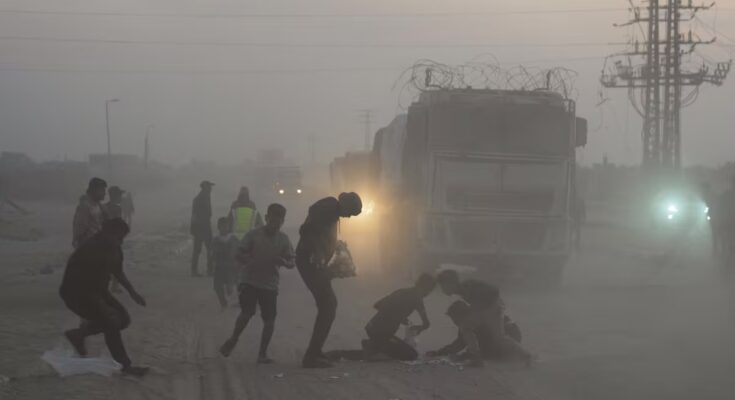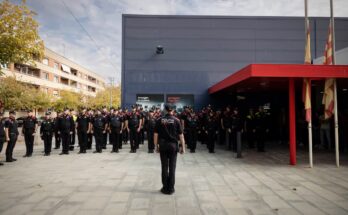The news sparked joy in Gaza. On October 9, 2025, thousands of Gazans considered themselves survivors of the brutal Israeli offensive when Benjamin Netanyahu’s government signed the ceasefire and Donald Trump, president of the United States and initiator of the initiative, assured that it was the beginning “of a lasting peace”. A month later, Gaza is frozen in a state between calm and war, the flow of aid remains limited despite the humanitarian urgency, and Gazans are subjected to a supposed peace process that neither offers them a clear future nor includes guarantees for the full withdrawal of Israeli troops.
The first weeks of truce, based on the first part of a roadmap whose final version bears the seal of the White House, have given respite to the inhabitants of Gaza. Leaving aside the two lightning offensives that killed many of the 241 Palestinian casualties during the cessation of hostilities and which Israel presented as punishment for alleged violations of the agreement on Palestinian fighters, the large-scale attacks have ended.
But many Palestinians are sceptical. “I suspect Trump suddenly has an interest in us after advocating genocide,” says Hassan, an 18-year-old from Gaza, from the Nuseirat refugee camp. “Now we need a truce at any cost to stop the killings,” says Ziad Abu Zayad, 85, a former minister in the Palestinian West Bank government and participant in previous peace processes. “But any plan that avoids the root of the problem, which is the Israeli occupation, will fail.”
That October 9, the American managed to convince the Israeli side to give the green light to the first nine points of the 20 included in his plan. They began to build peace from the roof: Israel and Hamas left for later the issues that define the final outcome of the war, such as the disarmament of the militias, the governance of the enclave or the Israeli withdrawal, and focused on guaranteeing the ceasefire, on the delivery of the 48 living and dead hostages in the hands of the Palestinians and on the resumption of the humanitarian flow to Gaza.
This Saturday Hamas said it had found the remains of another hostage. This is the Israeli soldier Hadar Goldin, kidnapped and killed by militiamen during the 2014 war. Now, if the delivery of this body had taken place correctly, there would be four lifeless hostages – three Israelis and a Thai – that Hamas would have left to be delivered in the first phase.
While Israel has avoided declaring an end to the conflict – Hamas and the United States have done so – the deal seeks to end an offensive that has cost Netanyahu and his former defense minister, Yoav Gallant, international arrest warrants from the International Criminal Court for crimes against humanity in Gaza.
Since October 2023, according to the Gaza Ministry of Health, Israeli troops have caused more than 69,000 deaths in the Strip, while thousands more Gazans remain missing. They also destroyed living conditions, damaging almost the entire housing stock and imposing a humanitarian blockade that led the UN to declare famine in parts of the enclave in August.
The ceasefire brought some relief to Gaza. Its inhabitants sleep better after the end of the indiscriminate bombing, the markets are a little better supplied and groups such as the World Health Organization announced on Wednesday a program to monitor the nutrition, vaccination and growth of 44,000 children.
Humanitarian aid suspended
Nonetheless, during the first weeks of the truce, Israeli authorities retained the ability to use fire and humanitarian aid to advance their interests, and did so with the apparent approval of the United States.
According to sources on the ground, Israeli troops continue to limit humanitarian supplies to a third of the 600 trucks per day required by the agreement. Furthermore, they allowed only two of the six border crossings with the enclave, preventing direct access to the north of the Strip and keeping the Rafah crossing with Egypt closed.
“The needs of the population are still enormous,” UN spokesman Farhan Haq said on Friday. The spokesperson denounced that there are “impediments” that continue to hinder the flow, and pointed the finger directly at Israel for having “rejected” during the cessation 107 requests to bring materials such as “winter clothes and sanitation supplies” into the enclave.
The Norwegian Refugee Council, which is part of the shelter cluster in Gaza, warned that there was “little chance to protect families from the growing cold” given the blockade of shelter-related materials.
“Nothing moves”
“My feeling is that nothing is moving,” laments Mkhaimar Abusada, a Gazan professor of political science at the defunct Al Azhar University in Gaza City, from exile in Cairo. “The people of Gaza lead the same miserable life (as before the truce). They are in tents, food is very expensive and running water is scarce.”
Furthermore, he says, Palestinians hear “every day” the bombs that Israel detonates in the half of the Strip that the first part of the truce grants them beyond the Yellow Line. This newly created internal wall cuts off the enclave and delimits the area to which Israel has retreated for the time being. Spokesman Haq denounced on Friday that Israel is destroying “residential buildings” in the areas it controls in Khan Younis, Gaza City and Rafah.
Now, the parties involved are faced with the conundrum of moving to the second phase of Trump’s roadmap, which addresses, interpretably, thorny issues such as the future governance of the enclave, which involves oversight by a Peace Board chaired by Trump, as well as the disarmament of Hamas or the withdrawal of Israeli troops. The plan links the advancement of these issues with the emergence of an international force (ISF) that does not yet have members.
The White House is seeking a mandate from the United Nations Security Council to deploy ISF forces in the enclave for an extendable two-year period, but countries such as Jordan have warned they will not send troops if the mission is tasked with disarming the militia. Voices on the Israeli right, such as Amir Avivi, founder of a forum with 55,000 former soldiers and reservists, see the difficulty of disarming Hamas through negotiations as an opportunity to resume the offensive “and finish the job,” as Avivi told the Israeli press.
“Using force to disarm Hamas would be a disaster for Hamas and anyone trying to disarm it,” Abusada says. The professor believes that the Palestinian groups will not cooperate if the truce does not offer them a final objective in exchange. “Trump’s plan talks about a political horizon and self-determination for the Palestinians. But the proposed resolution that the United States presented to the UN does not do so,” he protests.
“Washington’s plan does nothing but change the face of the occupation of Gaza and gives it international legitimacy”, warns Abu Zayad, former minister in Ramallah, on the phone from Jerusalem, agreeing with those who see in the project an attempt to reverse the trend that several Western countries, including Spain, had promoted by recognizing the Palestinian state.
The veteran negotiator brings together the Arab Peace Initiative, which in 2002 led 54 Arab and Muslim countries to pledge to normalize relations with Israel if the Jewish state lifted its occupation of the West Bank, Gaza and East Jerusalem, the three Palestinian territories. “The formula is simple,” he summarizes. “Occupation always provokes resistance. As long as the United States and Israel refuse to understand it, the conflict will change phase, but no one will be safe. Palestinian peace is a condition for Israeli peace.”



